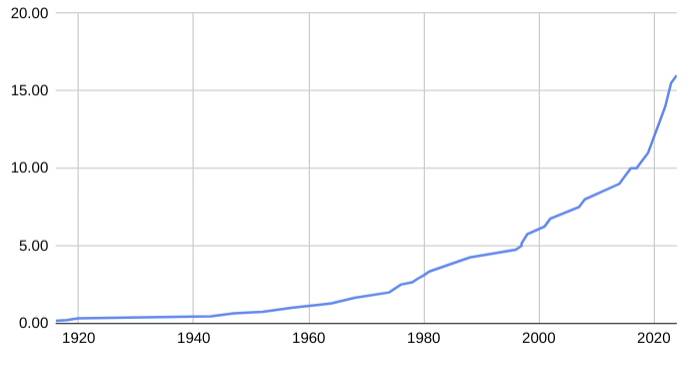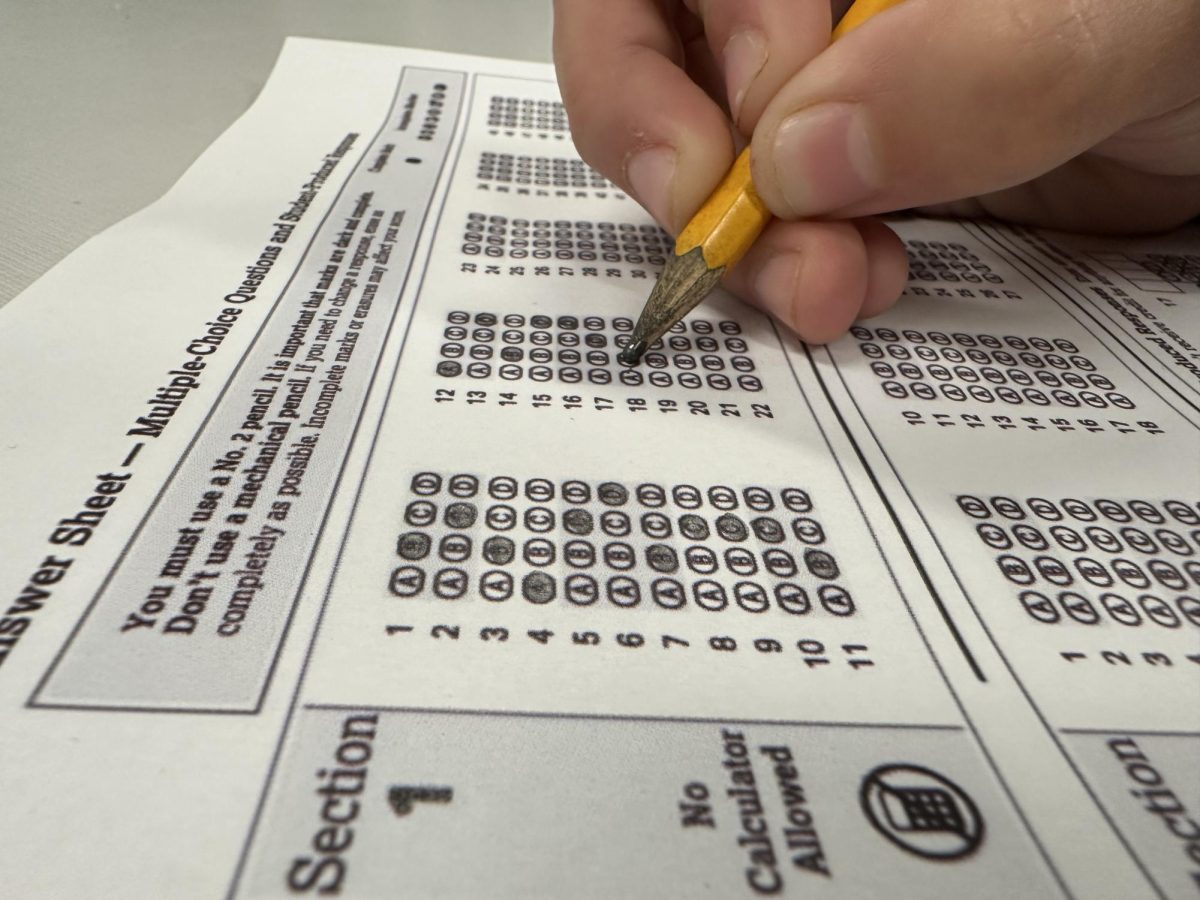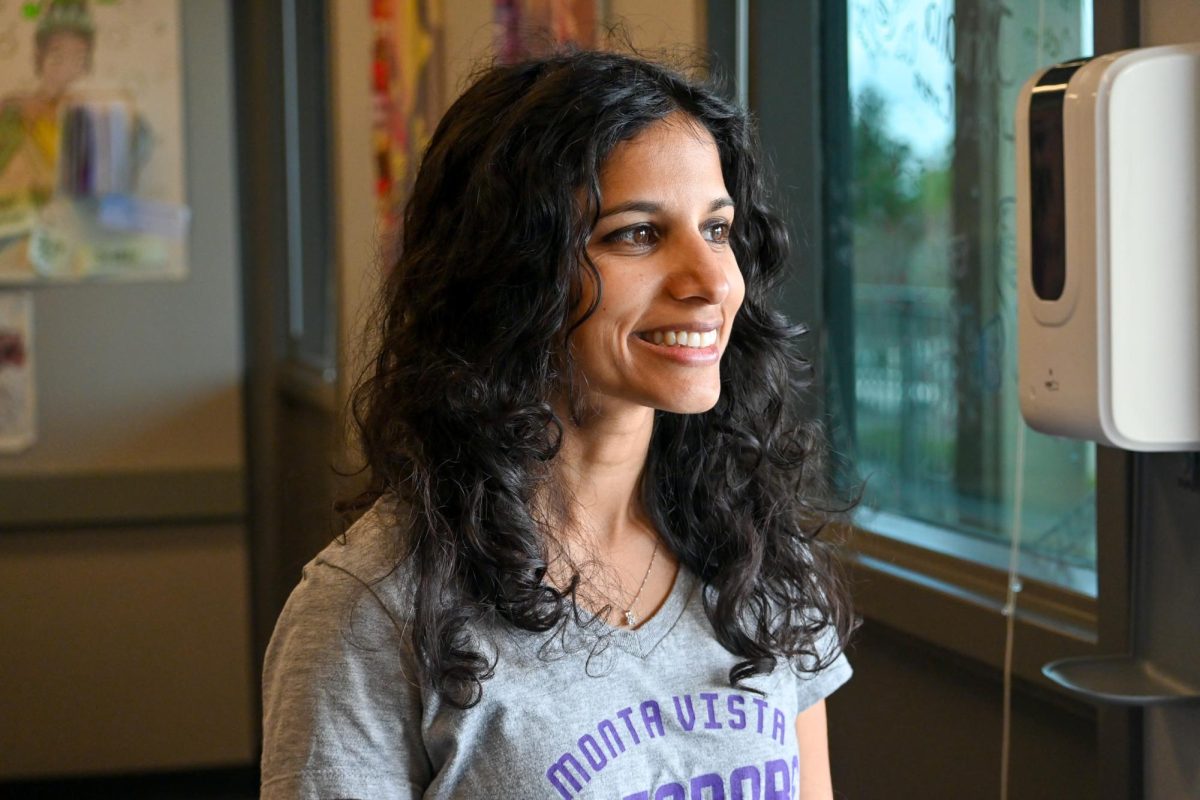This story was originally published without the video in the March 2015 print issue of El Estoque.
2.5 seconds
A group of about 15 students sit in a classroom tucked above the Baskin Robbin’s on De Anza Blvd. All but one are Asian, and a first grader sits only two seats away from a senior in high school. It’s a Tuesday night over February break. The teacher, Jin Chin, switches on a computer monitor.
In 2.5 seconds, a sequence of 10 two-digit numbers flash on the computer screen.
In those 2.5 seconds, the buzz of noise recedes into complete silence. The students must memorize those five numbers.
Now, it’s time to add those numbers together. They have about five seconds. And all calculations must be mental.
Chin fires out three names. When these three most advanced students strike out, Chin turns to Jackie Machale, whose older brother was an abacus legend. He’s in elementary school, but he seems to have the same gift as his brother. When Machale answers correctly, Chin nods her head as the class giggles at the turn of events. She plays another sequence.
Abacus math uses the counting tool with beads to instill mental math skills in students. At MVHS, an abacus community with students of different levels has begun to bloom as students continue to hone their mental math talents.
Chin, the head of Jin’s Mental Arithmetic Academy, has taught several MVHS students from a young age. The younger a student begins, the clearer the image of the abacus will become in their minds as they become older. When Chin immigrated to the U.S. from Taiwan in 1985, a mere five students enrolled in her abacus classes. Thirty years later, Chin’s small enclave of students has grown into an internationally renowned group.
“Only some kids can do [abacus],” Chin said.
Sophomore Ethan Chang was one of them. He began classes with Chin in kindergarten and focused on the paperwork section of abacus. In particular, Chang’s speed at doing division put him at the same level as some of his older classmates.
Eleven years later, he can solve 50 division problems in under five minutes. He no longer uses a calculator for arithmetic. His success at competitions has won him trophies that occupy half-a-closet of space.
“As time goes on the numbers became implanted in my head,” Chang said. “When I see a two-digit and three-digit number I can multiply them instantly because I’ve memorized all the numbers.”
There’s no secret method to how Chang attained this ability. The simple answer: repeat, repeat, repeat. After 11 years of practice, the mental math gears in his head turn faster. However, Chang admits that the constant practice could become tedious.
“My greatest challenge is to keep trying to get myself to improve,” Chang said. “Honestly, sometimes [abacus] gets kind of boring.”
Yet, Chang knows that his affair with abacus has lasted too long to give it up.
On the other hand, MVHS’s affair with abacus has just begun. The Abacus Club had its first meeting on Feb. 27. Sophomore Nathan Wong started the club in the effort to share a part of Chinese culture and show that abacus can be a lot more fun than it seems.
Unlike most participants, sophomore Steven Liu, who only started abacus this year, pursues abacus as a hobby rather than a competitor.
“It makes you think reactively,” Liu said. “It makes your brain feel a lot cleaner. It flushes out a lot of distractions. It helps you focus.”
Only the clicks of abacuses can be heard in Chin’s class. The students, who finished the oral portion, have moved on to paperwork for the last hour of class. Chang progresses the fastest and often completes a sheet 30 seconds before his classmates. Chin occasionally provides a word of advice in Mandarin. Others put their hands on their heads to concentrate.
One hour of repetition, of addition, subtraction, multiplication, and division.
However, the students need those hours of repetition to be able to solve a problem in 2.5 seconds.






















